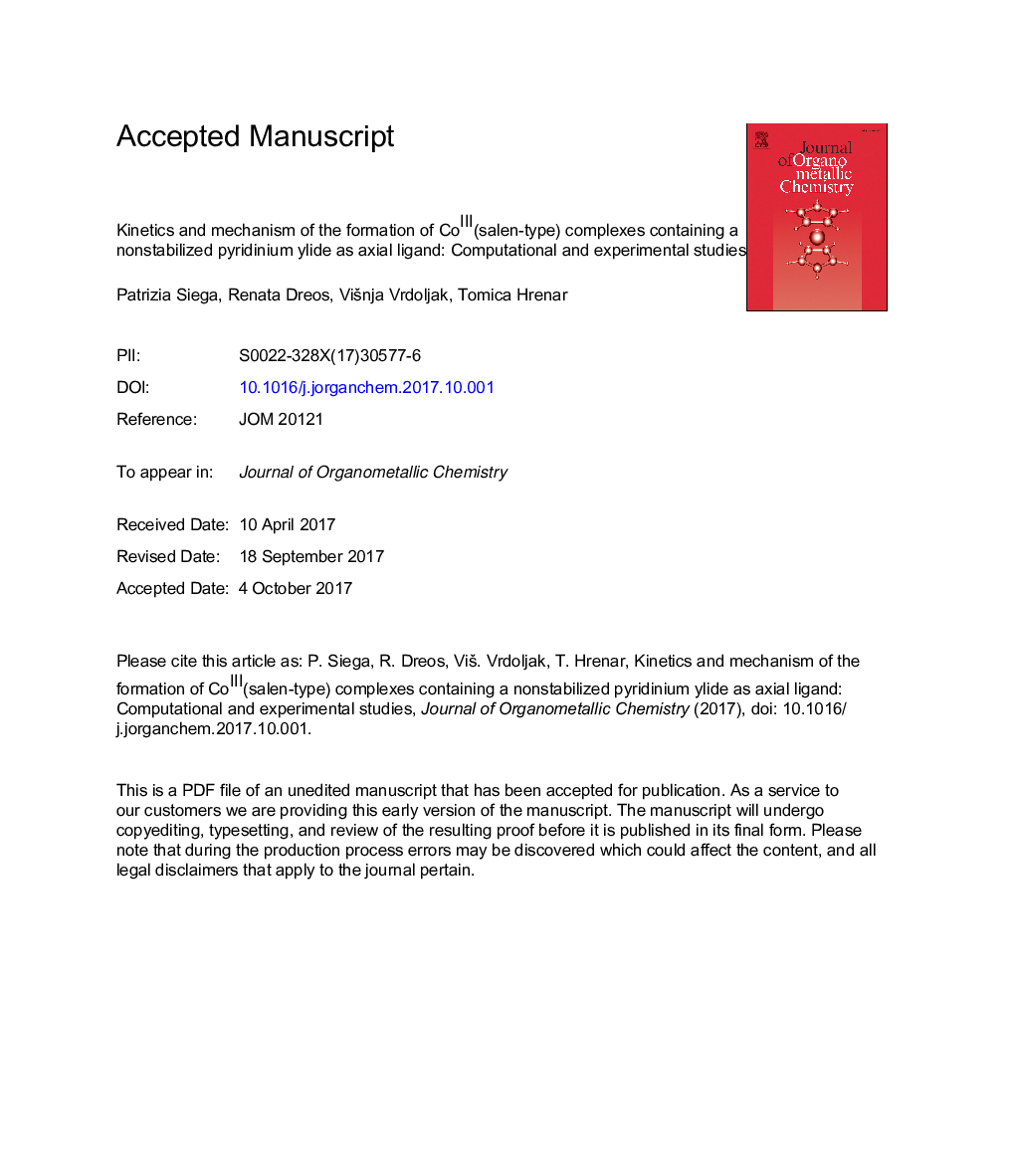| Article ID | Journal | Published Year | Pages | File Type |
|---|---|---|---|---|
| 5152663 | Journal of Organometallic Chemistry | 2017 | 19 Pages |
Abstract
The reaction of [CoIII(4,4â²dmsalen)(CH2Cl)(L)], where 4,4â²dmsalen = 4,4â²-dimethylsalen and L = solvent, with pyridine led to the isolation of [CoIII(4,4â²dmsalen)(CH2py)(Cl)], in a two-step process involving a metallacyclized intermediate, cis β [CoIII(4,4â²dmsalenCH2)(py)(L)]+, whereas a parallel direct conversion through the displacement of a Cl atom from the axial CH2Cl group of [CoIII(4,4â²dmsalen)(CH2Cl)(L)] may be ruled out. Natural bond orbital analysis of the structures show that the ylide carbon atom has lower orbital occupancies in the cyclized complex, thus making it more susceptible to a nucleophilic attack of pyridine. The calculated potential energy surfaces indicate that the most energy feasible reaction path would be for the complex [CoIII(4,4â²dmsalenCH2)(py)ax(H2O)]+, with an entering pyridine molecule and a leaving equatorial water molecule. Experimental kinetic studies of the formation of the ylide complex starting from [CoIII(4,4â²dmsalenCH2)(py)eq(H2O)]+ strongly suggest that it is possible to obtain the ylide complex through an alternative, less energetically favourable path.
Related Topics
Physical Sciences and Engineering
Chemistry
Inorganic Chemistry
Authors
Patrizia Siega, Renata Dreos, Višnja Vrdoljak, Tomica Hrenar,
